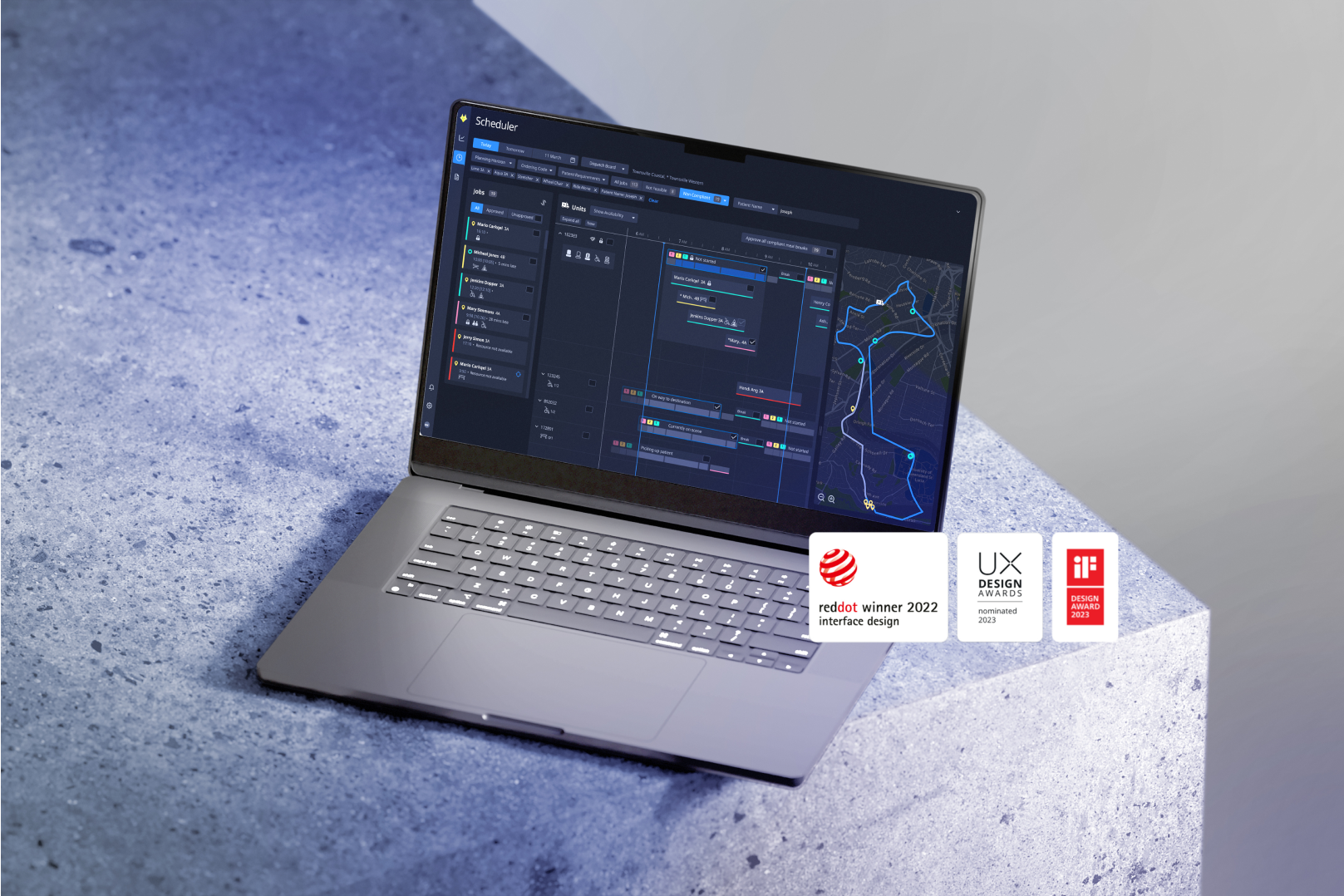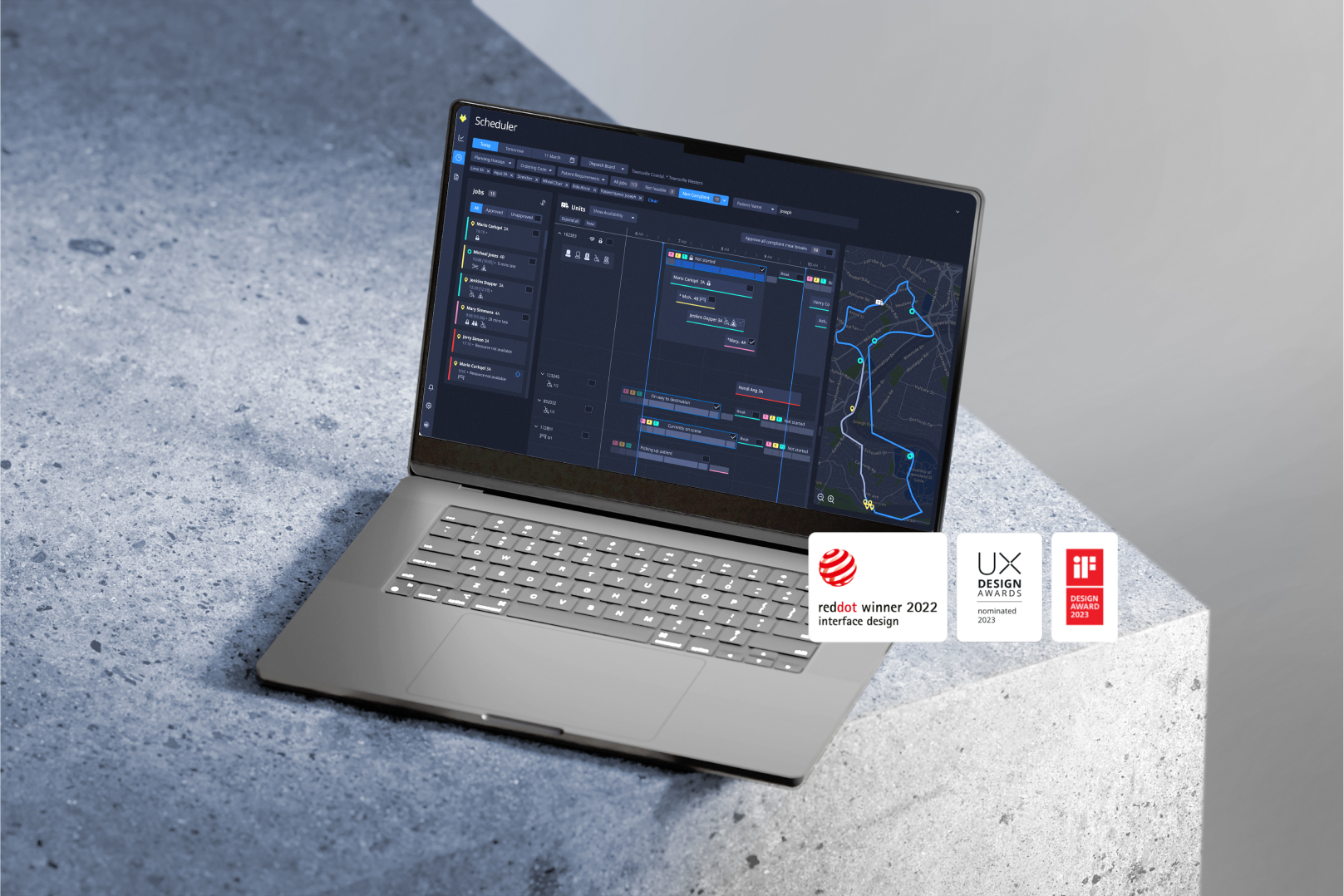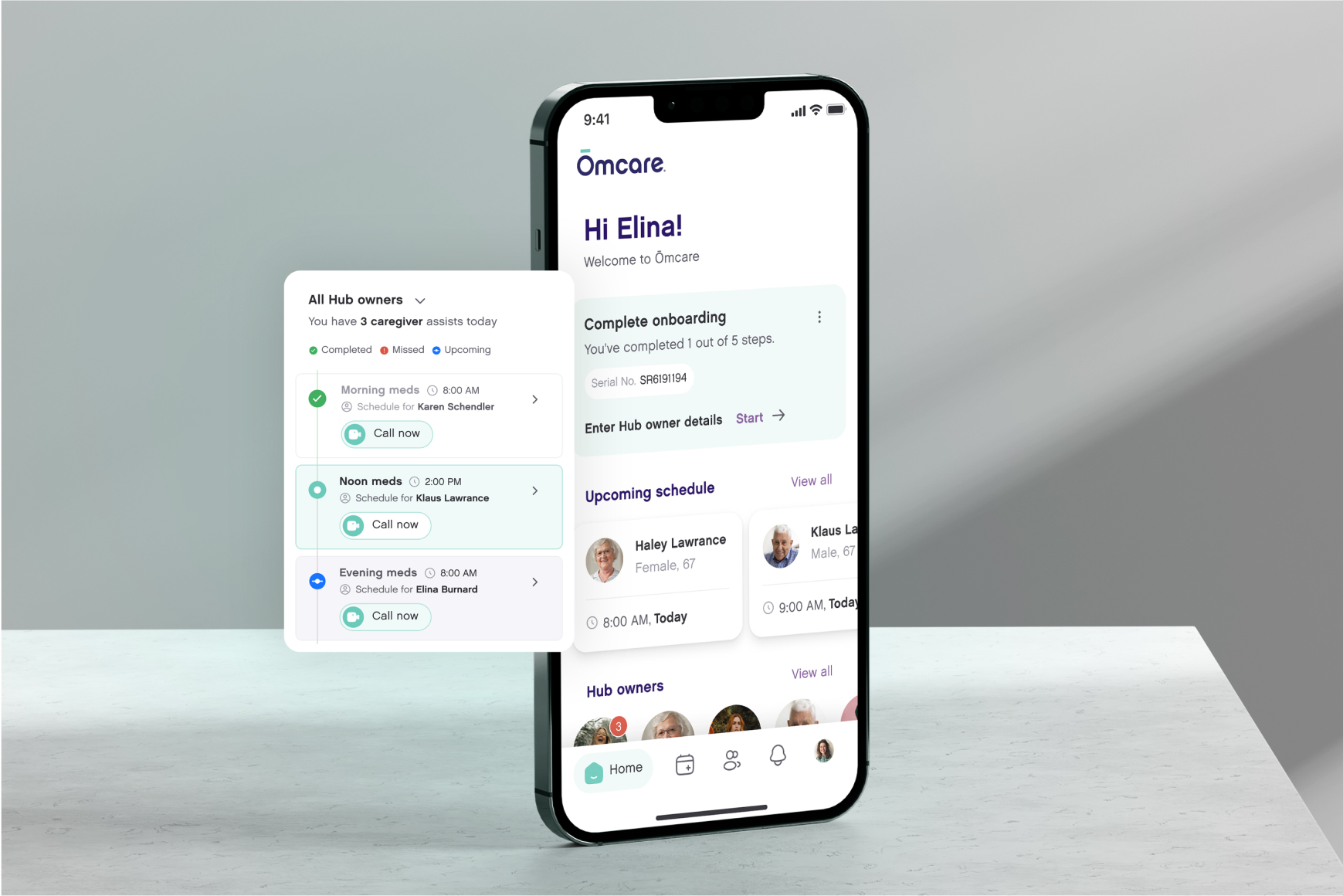Project Overview
Aubergine Solutions teamed up with Deccan International to create an award-winning adaptive non-emergency patient transport platform. It simplifies complex scheduling with user-friendly interfaces, custom maps, and charts, boosting efficiency in non-emergency healthcare transport.
Impact
Won 3 global design awards



30%
Reduction in non-emergency patient transport scheduling time, globally.
20+
Reduction in operational costs
The Problem

Inefficient Manual Scheduling
Prone to errors, leading to missed or late appointments and extended staff working hours.
Lack of intuitive data
Schedule managers and drivers require actionable data to scan and optimize trips effectively.
Limited scalability and control
Difficulty scaling across multiple regions while maintaining high performance and consistency.
The Solution
Goals
Reduce costs and increase efficiency with automation.
Enhance patient experience through intuitive platform use.
Improve care with balanced and optimized staff schedules.
A platform that manages schedules, compliance, and performance.
To address the complexities of patient transport scheduling, Aubergine Solutions developed a unified platform featuring a Gantt-chart timeline view that consolidates all critical data. The timeline provides an at-a-glance overview of vehicles, patients, compliance statuses, resource availability, and staff schedules, streamlining operations into a single cohesive system. This interface reduces the inefficiencies of switching between multiple tools, enabling operators to manage schedules more effectively.

The timeline is seamlessly integrated with a dynamic map, allowing real-time monitoring of patient locations and vehicle movements. The map offers an aggregated view of planned jobs, compliance requirements, and available resources, giving operators a holistic understanding of demands. Customizable filters allow operators to tailor their views by vehicle type or driver availability enhancing resource utilization and reducing errors.
By combining robust visualization tools with centralized data, the platform not only optimizes scheduling but also ensures timely patient transport, improving coordination and overall satisfaction.
“They’re very detail-oriented and suggest great ideas to improve our product. Our meetings often transitioned into brainstorming sessions, where their staff displayed their refined industry experience and knowledge.”
- Product Developer at Deccan International
Smart adaptive scheduling with real-time control
To provide operators with greater flexibility and insight, we introduced an interactive timeline for dynamic real-time adjustments to schedules. Delays can be managed effortlessly, with instant route adjustments that don't require overhauling the entire schedule. This adaptive system combines dense information and visual richness for an intuitive user experience.

Predictive analytics enhance the system by forecasting demand spikes and resource shortages, allowing operators to plan ahead and minimize disruptions. Operators can track vehicle locations, monitor traffic conditions, and make informed decisions on the fly, reducing errors and delays while boosting efficiency.
The platform transforms complex scheduling tasks into streamlined operations by integrating essential data for decision-making. Operators can swiftly respond to changes, ensuring timely patient transport and optimal resource utilization, thereby improving service quality and process efficiency.
“Our focus was to streamline scheduling while giving operators more control through automation.”
- Project Lead at Aubergine Solutions
Contextual map views with customized map and chart libraries
Deccan International's operations span diverse regions, each with unique logistical challenges. We designed a customizable map interface for detailed visibility into regional transport activities, dynamically adapting to the scheduler’s context for a seamless experience.

The map views allow operators to zoom into specific routes and regions, revealing transport patterns and compliance statuses instantly. When zoomed out, it displays overarching patterns through interactive charts, and zooming in provides detailed statistics and visualizes individual pick-up and drop-off points.
In specific runs, the map highlights the entire vehicle route, including real-time positions, with filters that allow customization by vehicle type, patient needs, or driver availability. This tailored approach enhances operational efficiency and improves patient care across complex geographical landscapes.
Results
30%
reduction in scheduling time
99%
on-time patient transport
20%
decrease in operational costs
100%
operational visibility with centralized control
- Automated workflows streamline scheduling, reducing errors.
- Real-time tracking of vehicles and traffic with optimized route suggestions.
- Predictive analytics anticipates demand spikes and adjusts resources proactively.
- Operators freed from routine tasks can focus on exceptions and urgent needs.
- Increased compliance with healthcare regulations through real-time monitoring and automated checks.
- Improved patient care with reliable, timely service.









